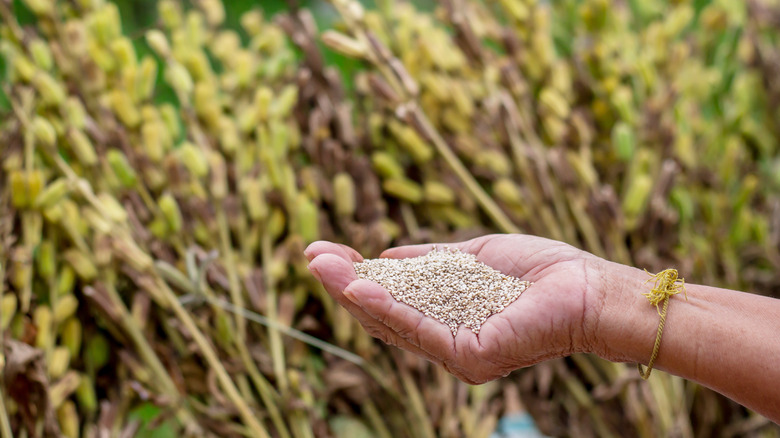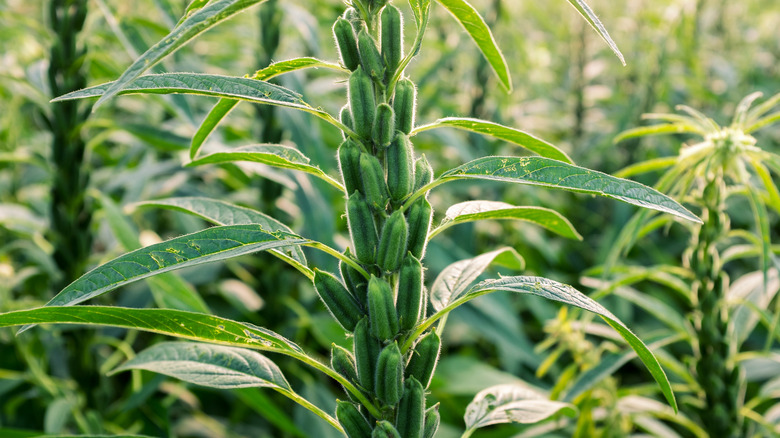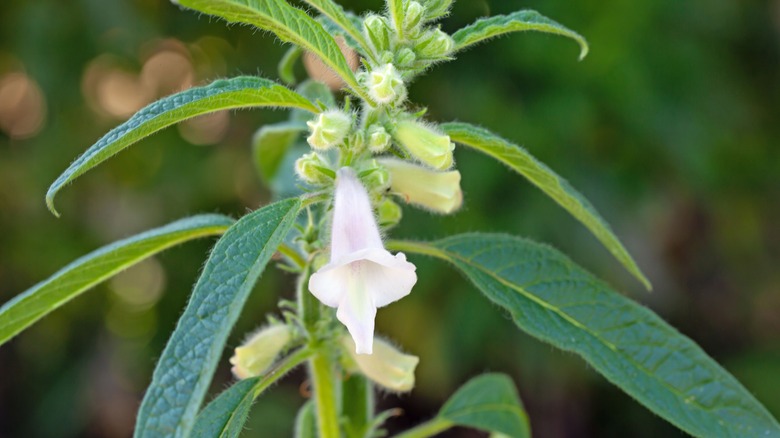How To Grow A Sesame Seed Plant Of Your Very Own
The magic trick command, "open sesame," holds a different meaning in gardening, when it comes to planting the sesame seed. The ancient sesame, Sesamum indicum, was once prized as an oil crop in Babylon and Assyria 4,000 years ago. The plant is known to attract bumblebees and it can bring more pollinators into your yard once it produces its bell-shaped light purple, white or pink flowers. Sesame grows well in zones 10 and above.
You don't want to just toss the seeds from your burger bun into your soil and call it a day, however. Growing a sesame seed plant of your own requires care, like any other plant, to produce its finest blooms and seeds when it reaches maturity. Some basic things to keep in mind when growing sesame are soil warmth, soil moisture, and sunlight requirements. Meanwhile, extra care tips to consider are pinching back blossoms, preventing stem breakage, and proper fertilization.
How to grow a sesame seed plant in your garden
To grow a sesame seed plant of your own, begin by planting the tiny seed indoors four to six weeks before the last frost date, in spring. Sesame prefers warm soil to cold; around 70 degrees or higher is ideal for germination. Plant seeds at a depth of ¾ – 1 ½ inches and keep them moist until they sprout. Once seedlings mature, harden them off before planting them outdoors in 30 inch rows with six to 18 seedlings, two to three weeks after the last frost date.
Sesame enjoys at least six hours of full sun, daily. It's a drought tolerant plant and like drier conditions, once established. Therefore, water only when the first inch of soil is dry being mindful not to create a waterlogged environment by overwatering the plant. When sesame matures, it should reach a height between 2 to 4 feet tall and 1 to 2 feet wide. The plant is ready to harvest 90 to 150 days after planting, when the pod is dry. Simply, remove the dried pod from the plant with your hands or cut it off. Then, crack the pod open and gently extract the seeds inside.
Extra care tips to grow your best sesame seed plant
To ensure you grow the best sesame seed plant possible, there are a few extra steps you can take. One tip is to pinch back the plant to encourage branching. This helps sesame grow more stems. You'll end up with more seeds, as a result. You can start pinching back the sesame plant after it has grown 8 to 12 inches tall. Then, position sharp pruners above a set of leaves and cut the stem at 3 to 4 inches off the top.
Additionally, you can prevent the stems of your sesame from breaking by giving your plants extra support with something like a trellis or bamboo pole. Since the pods may become too heavy with seeds, your stems remain vulnerable to breakage when harsh winds pick up. It can also be advantageous to supplement your sesame plant's growth with nitrogen fertilizer. Applying organic sources like animal manure or legume cover crops before the green buds emerge are a few ways to add nitrogen to your soil so your sesame plant thrives.


